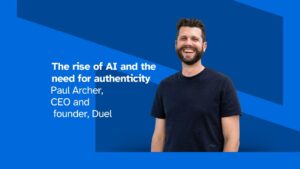By Justin Anovick, Chief Product Officer, Optimizely
We are living in a time of rapid change, and the pressure to adapt, innovate or be left behind is a scenario many businesses are currently familiar with. German-American economist Theodore Levitt famously explored the link between creativity and innovation, stating that “creativity is thinking up new things. Innovation is doing new things.”
This statement is still true to this day. Within the sphere of digital marketing, continuously evolving consumer expectations and advanced technologies shape the landscape of change. The digital experiences that resonate with consumers now may not hit the same note a year on — as such, the challenge is to not simply come up with great ideas, but apply them across operations to build continuous improvements and innovation into every aspect of the marketing strategy.
There are certain steps marketers must take to enhance their existing strategies in order to stay one step ahead of competition and prepare their business to ensure it can cater to and satisfy the next generation of digital customers.
It’s all in the mindset
If marketers want to succeed in creating powerful and engaging digital experiences, then it’s crucial that they embrace an experimentation mindset. Think about the top tech giants like Amazon, Facebook and Netflix. One of the main reasons why they are so successful today is because they continuously experiment with their digital platforms and their personalisation strategies to give customers a more engaging and unique experience.
Embracing an experimentation culture throughout the whole marketing team is vital to understand how your customers will react and respond to personalisation features, so must always be threaded into any digital marketing strategy.
An example of where brands have succeeded using experimentation is AeroMexico. The airline noticed that customers were going through the whole process of purchasing flight tickets, only to abandon their carts at the last minute. The company therefore wanted to boost its conversion rate through the checkout process.
After carrying out A/B testing, the airline decided to personalise the checkout experience for those who had abandoned their cart so that they were able to return to the exact flight they had searched for earlier and purchase at a later stage.
By personalising and ultimately streamlining the checkout process, AeroMexico saw an uptake in both revenue and sales conversions figures.
No more guesswork
Personalisation used to involve a lot of guesswork, but by implementing innovative digital experience platforms, much of this can be taken out. This has been further enhanced through the use of techniques such as artificial intelligence (AI), which has enabled a more data-driven approach to personalisation.
Marketers and developers can tap into data analytics and omnichannel insights to gain actionable insights and deliver flexible approaches to personalisation. These insights provide the missing jigsaw piece to give marketers a better understanding of what’s happening in each experience and how to personalise each one to drive outsized business outcomes.
Personalisation is usually seen as a way of creating one-to-one experiences, and individual personalisation has always been a big goal for marketers. But successful personalisation and experimentation is all about the segmentation and creation of actionable audiences that can help to increase ROI.
Such an approach means you’re addressing larger audiences through behaviour-based decision making, providing insight into what works best for groups of individuals. However, due to issues around privacy and personal preference, it’s important to involve the end-user in this process. Customers should be able to opt in to the level of personalised content that they receive, and this is where experimentation can play a key role. Trying out different personalisation tactics will tell you which are accepted and which are seen as too invasive or not necessary.
Personalisation is a journey that must adapt and change as the target customer base itself changes. Optimisation is the key to unlocking this potential; by experimenting with messaging, content and experience, marketers are able to gather more data-driven insights for more strategic decision making and a better long-term impact.
Give it time
At the beginning of any personalisation campaign, it’s likely that this will only reach a very limited audience — most likely 10-15% of the entire target number. But this data set is enough to start a personalisation journey and will increase with time as a company’s personalisation and optimisation efforts grow.
Once an organisation has become comfortable with using personalisation methods, use cases will likely increase to at least 75-100% of the audience, meaning it’ll be easier to drive new and innovative strategies likely to engage and delight customers.
One example is experimenting with symmetric messaging: a process where you align your site and engagement channels and personalise these to tell the same story. For example, tap into what your customer is searching on Google and if they are directed to your site, (in this circumstance, it could be jewellery), and then make sure they’re able to easily find jewellery on these channels. Following a strategy like symmetric messaging can help to increase ROI and reduce Cost per Lead (CPL) from acquisition campaigns.
The benefit
Merging personalisation with optimisation and data-driven techniques is key to keeping up with consumer demand every step of the way. While optimisation tools provide the means to create desired outcomes across every touchpoint, sophisticated targeting techniques provide a level of personalisation likely to create a more loyal customer base. Digital marketers must combine both in order to evolve their experiences across their chosen platforms and unlock digital potential.
This can only be done through strategic and innovative experimentation, and through acting quickly and confidently. Those who wait to make changes and spend too much time on making a decision around their digital experiences will likely fall behind the competition. But one of the key benefits of combining experimentation and personalisation is the ability to respond and make the necessary changes with speed which will in turn, deliver better business outcomes and reap long-term rewards.









